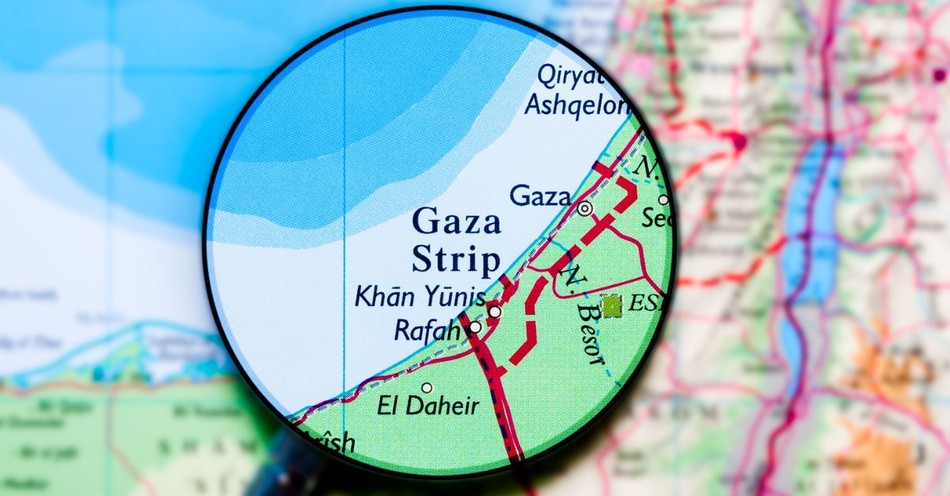An increasing number of academics and students alike place the Israel-Palestinian conflict in the context of an oppressor and the oppressed. Israel is described as the “occupier,” or oppressor, and, thus, Palestinian violence is overlooked, if not condoned, as the legitimate reaction of a victim of oppression. This narrative portrays Hamas—the jihadist terrorist organization whose charter calls for the genocidal annihilation of the State of Israel—as the victim fighting for freedom from the occupation and serves to legitimize it and its barbaric murder of Israelis on October 7, 2023.
The key question here is whether Israel is “occupying” the West Bank and Gaza Strip illegally, as Palestinians claim. Let’s unpack a bit of history to clarify what actually happened.
What Was the 1947 UN Partition Plan?
The region known as Palestine lay in the heart of successive Islamic empires for almost 1,300 years. It was largely barren and unpopulated compared to today, and its population was predominantly Arab except around Jewish holy sites, including Safed, Tiberius, Hebron, and Jerusalem. In the 1800s, Jewish immigrants fleeing pogroms in Russia began to build farming communities, and Arabs moved there from surrounding areas to take advantage of better-paying jobs. The two populations grew at similar rates with little conflict until the 1920s, when the Middle East underwent seismic changes after the defeat and dismantling of the Ottoman Empire in World War I.
The British were given some Ottoman lands, including Palestine, under mandate to prepare them for self-rule. Even though the Balfour Declaration declared Britain’s intent to establish a Jewish homeland in Palestine, it gave almost 78 percent of Palestine to the Arabs and established what became the Hashemite Kingdom of Jordan. The remaining 22 percent of Palestine is the area between the Jordan River and the Mediterranean Sea, and certain Muslim leaders created an opposition to the establishment of Jewish sovereignty there.
After over 20 years of what became an impossible situation, the British turned it over to the United Nations, which in 1947 approved a plan to partition the land into two states—one Jewish and one Arab. The Jews declared the State of Israel, but the Arabs rejected the plan, and five Arab armies attacked the newly founded country. At the end of the War of Independence, Egypt had occupied Gaza, Syria occupied the Golan Heights, and Jordan had taken the central part of the country, expelling 17,000 Jews and naming it the West Bank of the Hashemite Kingdom of Jordan, albeit with no international authorization—even the United Nations said Jordan had no legal claim to it.
The Truth about the West Bank and the Gaza Strip
What Happened in 1967?
Faced with an imminent invasion by Egypt, Syria, and Jordan, Israel launched a series of preemptive strikes in June 1967. After the short but victorious six-day battle, the Jewish State captured land from all three—the Golan Heights in the north from Syria, Gaza and the Sinai from Egypt, and the West Bank and East Jerusalem from Jordan—and absorbed over 1 million Palestinian Arabs.
The West Bank
As a result of the Six-Day War, Israel had gained control of the West Bank of the Kingdom of Jordan, including the Old City of Jerusalem and Judaism’s most holy site—the Temple Mount. Thousands of years of history was embedded in the territory. The “West Bank” is biblical Judea and Samaria and is full of holy sites, like the Temple Mount, the Cave of the Patriarchs, Rachel’s Tomb, and the Tomb of Joseph. It included Judaism’s fourth holiest city, Hebron, where Jews had lived for centuries until they were kicked out in the 1920s. They had been free to live and settle throughout the “West Bank”—even under the Ottomans—before it was occupied by Jordan in 1948.
It is important to note that since the “West Bank” was still considered previous Ottoman lands not yet given over to a country, it is considered “disputed” territory by international law, not “occupied.” Israeli communities in the “West Bank” are therefore not considered illegal, and to the Jewish people, they are simply reestablishing what was already there before Jews were expelled in 1948.
Gaza
Also, as a result of the Six-Day War in 1967, Israel controlled Gaza. The 1978 Camp David Accords attempted to provide some sort of self-rule for the Palestinians living there, but to no avail. The Oslo Accords in 1993 also fell short, though Israel surrendered governmental control of Gaza to the Palestinian Authority (PA) as part of the agreement, and in 2005, the Israeli government decided to move out of Gaza, mandating all Israeli settlers evacuate the area. Gaza soon voted Hamas in, and by mid-2007, Hamas had complete control over Gaza. On October 7, 2023, when Hamas brutally attacked Israel, Gaza was under the control of the Hamas government, not under Israeli control. Israel had moved out 18 years earlier.
From the River to the Sea
Even if the case could be made for Israel as an illegal occupier of either the “West Bank” or of Gaza, this does not explain why the Palestinians are calling for the eradication of all of Israel. The motto “From the River to the Sea Palestine will be Free” is a call for the genocide of the people of Israel and for the Jewish State to be replaced by a “Jew-free” Palestinian state. Accusing Israel of being an occupier is not based on fact but is a ploy to call for her end.
Despite this well-documented history, Israel is being branded an occupying power in not just the West Bank and Gaza Strip but all of Israel, even though Jewish history there goes back 3,500 years. Today’s Judea and Samaria are the birthplace of the Jewish people, who were ruled for millennia by a Jewish kingdom. Even Judea was named after Judah, one of the 12 tribes in the Bible, from which the word “Jew” is derived.
We must fight the rewriting of this history and vilification of the Jewish people because the enemies of truth will not stop with the West Bank and Gaza Strip but will continue demonizing Israel until they control it all—from the Jordan River to the Mediterranean Sea.
This article was originally published on June 10, 2024, at: www.icejusa.org/2024/06/10/west-bank-gaza-strip
Photo Credit: ©Getty Images/pawel.gaul


.jpg)

.jpg)
